new posts in all blogs
Viewing: Blog Posts Tagged with: 2005, Most Recent at Top [Help]
Results 1 - 25 of 31
How to use this Page
You are viewing the most recent posts tagged with the words: 2005 in the JacketFlap blog reader. What is a tag? Think of a tag as a keyword or category label. Tags can both help you find posts on JacketFlap.com as well as provide an easy way for you to "remember" and classify posts for later recall. Try adding a tag yourself by clicking "Add a tag" below a post's header. Scroll down through the list of Recent Posts in the left column and click on a post title that sounds interesting. You can view all posts from a specific blog by clicking the Blog name in the right column, or you can click a 'More Posts from this Blog' link in any individual post.

By:
Becky Laney,
on 7/29/2016
Blog:
Becky's Book Reviews
(
Login to Add to MyJacketFlap)
JacketFlap tags:
World War II,
2005,
j nonfiction,
Houghton Mifflin Harcourt,
mg nonfiction,
review copy,
2016,
books reviewed in 2016,
books reread in 2016,
Paris in July,
Add a tag
The Journey That Saved Curious George. Louise Borden. 2016. HMH. 96 pages. [Source: Review copy]
First sentence: For many years, I was intrigued by the story of Margret and H.A. Rey's flight from Paris on bicycles in June 1940.
Premise/plot: This children's nonfiction book is just right for elementary readers. It begins by providing background and context for young readers. Hans Augusto Reyersbach and Margarete Waldstein grew up in Germany. Both were Jewish. At some point in the 1920s, he moves to Rio de Janeiro. She follows a little while after. They meet again there, and fall in love. Paris is one of the stops on their honeymoon--they are Brazilian citizens now--and Paris is where they decide to remain. They work many happy years together in Paris. But their work--and their lives--are threatened when World War II goes from being something you read about in the papers--to something happening a few miles outside the city limits.
As Jews, they are at great risk if they remain in Paris and Paris is captured by the Nazis. But. For better or worse. They waited a little too long to leave the city...in an easy way. The last rush sees them desperate to find two bicycles. I believe the book says he had to build the bicycles himself from parts. But it isn't just a story about saving the authors' lives, it's a book celebrating the manuscript that would become Curious George. That was one of the possessions that they took with them--on their bikes. Of course what you may not know is that "George" wasn't George just yet. The monkey was originally called Fifi. And publishers had already agreed to publish the book before they made their flight...
The book focuses on H.A. and Margret Rey, their work as writers, and how the war effected their lives.
My thoughts: This is a very enjoyable read. I loved how the author was able to reconstruct their lives and give readers a behind-the-scenes look into the writing and illustrating of books. The book felt personal, but, always appropriate.
I would definitely recommend this one.
© 2016 Becky Laney of
Becky's Book Reviews
Criss Cross. Lynne Rae Perkins. 2005. 337 pages. [Source: Library]
If Criss Cross had not won a Newbery, would I have felt differently about it? I think I definitely would have had lower expectations, and lower expectations or even no expectations often work in a book's favor. High expectations can lead to disappointment and frustration.
Criss Cross didn't "wow" me. I wasn't overly impressed with the writing, the characterization, or the plot. That is I did not find the writing, the characterization, or the plot: amazing, brilliant, wonderful, spectacular, or overly memorable. There was never this WOW, WHAT A BOOK moment.
The writing was okay. It was. The characterization was just fine. The plot, well, not much happens, but not much has to happen if I'm enjoying the writing or the characters. It was an ordinary, just fine, not-extra-memorable read for me. Nothing to complain about certainly, but nothing to gush about.
Criss Cross visits the lives of a handful of teens: some boys, some girls. One of the characters is a girl named Debbie. She almost has a main-character feel to her. But just almost. There were too many character perspectives to really feel properly settled with any one of them as being the main character. There lives sometimes touch each other. (One chapter even has two perspectives side by side.) Criss Cross is definitely made up of many moments--seemingly insignificant moments--that when reflected upon later take on a bit of significance.
For those who love coming-of-age stories, this one could prove satisfying enough.
I will add that this one is historical fiction. Though the historical setting is a bit fuzzy. There are hints throughout the text that this is set in the past, but, it may not prove obvious to every reader, especially in the beginning.
© 2015 Becky Laney of
Becky's Book Reviews

By:
Becky Laney,
on 9/13/2015
Blog:
Becky's Book Reviews
(
Login to Add to MyJacketFlap)
JacketFlap tags:
Animal fantasy,
MG Fiction,
library book,
MG Fantasy,
books reviewed in 2015,
Random House,
J Fiction,
J Fantasy,
Newbery Honor,
2005,
Add a tag
Whittington. Alan Armstrong. 2005. Random House. 208 pages. [Source: Library]
I enjoyed reading Alan Armstrong's Whittington. This book celebrates two of my favorite things: storytelling and cats. The framework of the story really worked for me. The modern day story is of a cat, Whittington, and his friends living in a barn. The book tells of his arrival at the barn, his meeting of the other animals, their hesitant acceptance of him. Soon Whittington proves his worth. One reason why may be he is great at storytelling. He tells the story of Dick Whittington and His Cat to the others. So readers are treated to TWO equally delightful stories. The book also features a few children, a brother and sister, the young boy is having trouble learning to read. The book explores the concept of the Reading Recovery program.
I liked this one very much. I liked all of the stories. I liked the characters--human and animal. It was just a satisfying way to spend an afternoon.
© 2015 Becky Laney of
Becky's Book Reviews

By:
Becky Laney,
on 5/12/2015
Blog:
Becky's Book Reviews
(
Login to Add to MyJacketFlap)
JacketFlap tags:
J Fiction,
J Fantasy,
Newbery Honor,
2005,
series book,
Bloomsbury USA,
MG Fiction,
library book,
MG Fantasy,
books reviewed in 2015,
books reread in 2015,
Add a tag
Princess Academy. Shannon Hale. 2005. Bloomsbury. 314 pages. [Source: Library]
I enjoyed rereading Shannon Hale's Princess Academy. I wanted to reread both Princess Academy and Palace of Stone before reading the third book out just this year. There isn't always time for me--unfortunately--to reread all the books in a series each time a new book is released, but, I do try to make it a priority when I've loved the author's work in the past. And that is certainly the case with Shannon Hale!
Miri is the heroine of Princess Academy. She is small, for her age, and is, in a way, kept separate from others her own age for the simple fact that everyone but Miri is already working in the quarry. Miri tends the goats and keeps house for her family: her older sister and father. (Her mother died within a week of giving birth to her.) Her father isn't a man of many words, and, Miri misunderstands much. The community in which she lives is dependent on traders. They work the quarry and mine linder, they trade the precious stone for food and other supplies. It is both an anxious and exciting time for the village. This year is especially so. For this year the trader brings a BIG, BIG message. All the girls of the community--within a certain age, I believe twelve or thirteen to sixteen or so--MUST attend Princess Academy. For the prophets have revealed that Mount Eskel is the home of the future Princess/Queen. The prince heir (Steffan) will visit the academy in one year to choose his bride. All the girls must be trained and educated for any one of the girls could potentially be 'the one'. It is a huge shock to the community. Miri, of course, is one of the girls.
Readers get to know many of the girls at the Princess Academy. Some better than others, of course. Britta and Katar are two girls that get much attention. For very different reasons though. The book chronicles Miri's time at the academy: what she's learning, what they're all learning, what she likes, what she wants, etc. One thing she wants is to be able to go home more frequently and see Peder, the boy she loves and hopes one day to marry.
Another focus of the book is on quarry speech and the magical qualities of linder.
The book celebrates stories and storytelling and the power of words and literacy, the importance of education and knowledge. Miri is wise because she is able to absorb what she's taught and use it to her advantage and to the community's advantage.
© 2015 Becky Laney of
Becky's Book Reviews
Big Over Easy (Nursery Crime #1) Jasper Fforde. 2005. 383 pages. [Source: Library] I really found myself liking the opening chapters of Jasper Fforde's The Big Over Easy, the first in a series. Inspector Jack Spratt heads the Nursery Crime Division in Reading. He's got a new partner, Sergeant Mary Mary. This case, their first case to work together, is a murder case. Humpty Dumpty has been murdered. Can these two find his killer before he (or she) kills again?! The premise has potential without a doubt. Not this particular case, but, any case. From the start, I found myself liking Jack Spratt and liking Mary Mary. (Though not necessarily liking their scenes together.) I also really liked Jack's mother whom we get to spend just a little time with here and there.
Here's a description of Jack visiting his mother:
She opened the door within two seconds of his pressing the doorbell, letting out a stream of cats that ran around with such rapidity and randomness of motion that they assumed a liquid state of furry purringness. The exact quantity could have been as low as three or as high as one hundred eight; no one could ever tell, as they were all so dangerously hyperactive. (30)
It's a mystery packed with puns and silly twists. While Spratt takes his job seriously, it can be hard for readers to always do the same. The book requires readers to just give into the silliness and the surreal-ness of it all. It's an odd book.
Unfortunately for me, the charm wore off. While I enjoyed the first third of the book, by the end, I was tired of it all. I think if I had read it all in one sitting, if I'd have managed my reading better, it could have worked. But the truth is, I found myself not caring about the characters and not caring about what happened next.
The Fourth Bear (Nursery Crime #2) Jasper Fforde. 2006. 382 pages. [Source: Library] While I didn't enjoy The Big Over Easy, I definitely enjoyed the second in the Nursery Crimes series, The Fourth Bear. (Though I do wish it had a different title!) The book continues the adventures--or misadventures--of Inspector Jack Spratt, Sergeant Mary Mary, and the alien, Ashley. All three, of course, work for the Nursery Crime Division of Reading. Conditionally at least, when they're not on probation or leave of absence. Jack Spratt is initially disappointed that his boss, Briggs, is not assigning him the BIG, BIG CASE that falls within his jurisdiction: The Gingerbread man has escaped, and he's a serial killer. Though it's obvious that the Gingerbread man is not a "real" person, the NCD does not get the case. Instead, Mary Mary and Jack Spratt are looking into a missing person's case. You can probably guess by the title that it might just have a little something to do with Goldilocks and The Three Bears. Though you should expect a few twists, obviously! Jack Spratt and Mary Mary are kept plenty busy with this case, and it's anything but simple or ordinary! It was fun in places. The writing, obviously, tried to pack in as many puns and jokes as possible. But some of them worked well, in my opinion. For example, the controversy over 'the right to arm bears' movement.
While most of the book does focus on the mystery, readers still get a hint of the personal lives of the main characters. (Jack and his wife, their new neighbors Punch and Judy, their daughter's wedding plans, Mary Mary's date with Ashley, meeting Ashley's family, etc.)
© 2015 Becky Laney of
Becky's Book Reviews
The Ship of Brides. Jojo Moyes. 2005/2014. Penguin. 464 pages. [Source: Library]
Did I love absolutely everything about Jojo Moyes' The Ship of Brides? No, I can't say that I did. But I enjoyed it enough to read it in two days. I'll start with what I loved.
I loved the subject. I loved the idea of reading about a group of women--war brides--sailing together into the unknown. The book is about a ship full of Australian women--all war brides--sailing to England in 1946. It isn't any ship either. It's an aircraft carrier. The potential to mingle with the navy is definitely there, though obviously discouraged. There are over 600 women on board, though readers only get close to four women who share a room: Jean, Avice, Margaret, and Frances. They are sailing into the unknown in a way because they've never been to England, they've never met their in-laws, and they haven't seen their husbands in months or even years. Take into consideration, that some of these couples only knew each other a few weeks before they got married, and, yes there is plenty of unknown ahead. Even if they felt like they *knew* their husbands when they got married, they don't know how the war has changed them, if the war has changed them. The time on the ship is an in-between time: the first taste of a big change in all their lives. Will they be happy? Will it all work out? Are they still loved? Are they still wanted? Several women receive messages--telegrams, I believe-telling them NOT to come.
I liked the narration, especially of the time on the ship. The days/weeks are chronicled, and, one gets a sense of the experience, of the journey. The anxiety, the awkwardness, the heat, the opportunities, the stresses, etc. I thought the setting was well done, for the most part.
Did I love the characterization? Not as much as I hoped initially. I don't know if there was any one character that I loved. And some of the characterization felt a bit uneven.
What I didn't quite love was the framework. The beginning and ending felt a little off to me. Readers first meet a grandmother and a granddaughter on their trip in India. The two just happen to stumble upon a ship about to become scrap. It is THE ship, and it overwhelms the grandmother to see it. The rest of the book is about the four women--really, just three women if I'm honest--and tries, I suppose, to keep readers guessing which of the three is the grandmother of the future. The ending is part of that framework: readers finally knowing how it all fits together.
I liked it. I'm glad I read it. I am. I'm interested in the subject. I would be happy to read more books like it. But it wasn't love for me.
© 2015 Becky Laney of
Becky's Book Reviews
Shadows of the Workhouse (Call the Midwife #2) Jennifer Worth. 2005/2008/2013. HarperCollins. 304 pages. [Source: Library]
I still haven't read the first book in the Call the Midwife series, but, I have seen most of series 1 and 2. I love, love, love the show. And I've seen the episodes adapting all these stories found within Shadows of the Workhouse. Do I recommend reading the books? Yes!!!
Shadows of the Workhouse is the second book in Jennifer Worth's memoir trilogy. The first part focuses on Workhouse Children. In this section, two big stories are related. First, readers meet Jane. Her story has a happy ending, but, it's an emotional struggle making the happy ending all that more triumphant. Second, readers meet Peggy and Frank. Again, these two grew up in the Workhouse. Their story is emotional and complex and not nearly as happy. The second part focuses on The Trial of Sister Monica Joan. (She's accused of theft and put on trial.) The third part of the book focuses on 'The Old Soldier.' Readers meet an old man, a lonely man, Joe Collett, whom Jenny treats daily/weekly. The book focuses on telling his story. Again, there is plenty of heartbreak.
I loved Jane's story. I did. I loved, loved, LOVED it. I thought the whole book was wonderful and thoughtful. Would definitely recommend.
© 2015 Becky Laney of
Becky's Book Reviews

By:
Becky Laney,
on 7/6/2014
Blog:
Becky's Book Reviews
(
Login to Add to MyJacketFlap)
JacketFlap tags:
classics,
picture books,
cats,
J Fiction,
early readers,
2005,
1969,
1973,
children's classic,
1949,
1947,
1954,
1960,
1957,
1972,
books reviewed in 2014,
Add a tag
The School for Cats. Esther Averill. 1947/2005. New York Review Children's Collection. 32 pages. [Source: Library] The School for Cats was originally published in 1947. It is part of a larger series of books starring the (black) cat Jenny Linsky and her friends. The School of Cats is not the first in the series, but, it is the first in the series that my library actually had. In this "Jenny's Cat Club" book, readers meet Jenny as she leaves her home in Greenwich Village to attend school in the country. She is very, very, very unsure about the whole school thing. But her master, Captain Tinker, wants her "to study cat lore in the country." There is definitely something of an adventure in this one when Jenny runs away from school. But it also contains a lesson on friendship and adapting to new situations.
I enjoyed this one. I look forward to reading others in the series.
Jenny's Moonlight Adventure. Esther Averill. 1949/2005. New York Review Children's Collection. 32 pages. [Source: Library]Jenny's Moonlight Adventure was originally published in 1949. It is part of a larger series of books starring Jenny and her friends. I did not like this book as well as The School for Cats. It is a Halloween adventure. Jenny must prove how brave she is both for herself and for her friends. She reluctantly accepts a job that only she can do. She is to carry a nose flute to a sick friend (another cat, of course). The job is "dangerous" because it requires her to be brave and clever enough to get past several unfriendly neighborhood dogs.
For readers who celebrate Halloween, this one might prove charming.
Jenny Goes to Sea. Esther Averill. 1957/2005. New York Review Children's Collection. 140 pages. [Source: Library]Of the Jenny Linsky books I've read so far, Jenny Goes to Sea is probably my favorite. In this chapter book originally published in 1957, Jenny Linsky and her two brothers, Edward and Checkers, travel the world with their owner, Captain Tinker. These three cats become very good friends with Jack Tar, the ship's cat. These three leave the ship in company with Jack Tar at many of the ports including Capetown, Zanzibar, Singapore, and Bangkok. Adventures come oh-so-naturally.
I definitely recommend this series to cat lovers of all ages.
Jenny and the Cat Club: A Collection of Favorite Stories About Jenny Linsky. Esther Averill. 1973/2003. New York Review Children's Collection. 176 pages. [Source: Library]Jenny and the Cat Club features five stories by Esther Averill. These were originally published in 1944, 1948, 1951, 1952, and 1953. The stories are: "The Cat Club," "Jenny's First Party," "When Jenny Lost Her Scarf," "Jenny's Adopted Brothers," and "How the Brothers Joined the Cat Club."
The Cat Club introduces readers to Jenny Linsky, a "shy little black cat" from New York City. Readers meet Jenny and her owner Captain Tinker. In this adventure, Jenny receives her signature red scarf, a present from her owner who happens to knit. This red scarf helps Jenny gain enough confidence to talk to other cats in the neighborhood. In this one, readers learn about the neighborhood cat club, they are briefly introduced to the other cats, and they learn that members of the cat club must be special.
Jenny's First Party is a story focusing on Jenny and her friend Pickles (the fire cat) teaming up and strolling the neighborhood. Both are looking for fun, fun, fun. But neither have money. (What cat has money?!) They stumble upon a groovy party and a great time is had by all. Readers learn that Jenny can dance a happy little sailor's hornpipe dance.
"When Jenny Loses Her Scarf" is about when Jenny's beloved red scarf was stolen by a dog. The dog, Rob the Robber, refuses to give it back. Jenny seeks help from Pickles the fire cat. Pickles is just the one to help her, it turns out, for justice is dealt out after all. The dog's hangout catches on fire! Pickles retrieves the scarf as he's putting out the fire.
"Jenny's Adopted Brothers" is about when Jenny meets two stray cats: Checkers and Edward. Checkers, readers learn, retrieves things. Edward, we learn, is a poet. Jenny meets these two, feels sorry for them, and introduces them to Captain Tinker. When these two are adopted by the Captain, Jenny feels very jealous! Will having two other cats in the house prove too much?!
"How The Brothers Joined the Cat Club" is obviously about when Edward and Checkers join the club. Jenny is hesitant to include her two new brothers at first. After all, she likes the idea that the club could remain her own little secret and her way to get away from them. But. Being the good little cat that she is, Jenny soon realizes that she could never really keep her brothers from missing out on the awesomeness of the cat club. She helps them discover their talents and introduces them to all her friends.
I liked this one. I did. I like meeting Jenny and the other cats.
The Hotel Cat. Esther Averill. 1969/2005. New York Review Children's Collection. 180 pages. [Source: Library]The Hotel Cat is an enjoyable children's novel by Esther Averill. It was originally published in 1969.
The Hotel Cat stars a cat named Tom. He lives at the Royal Hotel, an eight-story building in New York. It is on the older side. And the hotel isn't doing the best business. But all that happens to change during the novel. Tom who is used to having the place to himself, for the most part, at least in terms of CATS ON THE PLACE discovers that there are cats there with their owners. The first few cats he meets he is rude, very rude. But after Tom's owner, Mrs. Wilkins, talks to him, he decides to be more gracious and welcoming. It isn't long before he meets three cats: Jenny, Edward, and Checkers. And those aren't the only cats from the cat club he happens to meet. A difficult winter has resulted in a lot of broken boilers and frustrated cat-owning homeowners are staying at the Royal Hotel. How convenient!
Tom learns a lot about making and keeping friends in The Hotel Cat.
I liked this one.
Captains of the City Streets. Esther Averill. 1972/2005. New York Review Children's Collection. 164 pages. [Source: Library] Captains of the City Streets is a children's novel by Esther Averill originally published in 1972. Two cats star in Captains of the City Street. In this one, the author provides the back story for two cats who have been a part of essentially the whole series. Sinbad and The Duke. These two stray cats are best buddies. They haven't been "owned" by a human in what seems like a very long time by cat reckoning. They are street cats, traveling cats, going from city to city to city, seeing all there is to see, always seeking handouts, but never becoming dependent on any one human. The two travel to "old New York." They are looking for a place of their own, a safe place to stay. They find it. They also find one old man who dependably gives them food day after day on their own terms. He comes and goes leaving the food, never trying to approach the cats, never pushing a relationship. The two cats slowly but surely decide that maybe just maybe humans aren't all that bad. That is when they stumble upon the Cat Club. They learn that the kind human is Captain Tinker. The first cat they befriend is Macaroni. The two are invited to join the Cat Club, but, are hesitant. Do they want to stick around that long? Do they want the responsibility?
I liked meeting Sinbad and Duke. The stories that focus on Jenny certainly mention these two quite a bit, but, this is the first time that readers really learn about these two in detail. It is a fun book.
Jenny's Birthday Book. Esther Averill. 1954/2005. New York Review Children's Collection. 44 pages. [Source: Library] Jenny's Birthday Book by Esther Averill was originally published in 1954. In this cat club book, Jenny Linsky, our star cat, our shy little black cat with the red scarf, has a special birthday with all of her friends whom we've met through the series. Pickles. Sinbad and The Duke. Florio. To name just a few. It is a lovely birthday. The book itself is sweet, simple, and charming. Especially if you like cats and vintage picture books. I think my favorite illustration is of all the cats dancing the Sailor's Hornpipe in the park.
The Fire Cat. Esther Averill. 1960/1983. HarperCollins. 64 pages. [Source: Own] I enjoyed revisiting The Fire Cat by Esther Averill. I read this one many times as a child. But I had no idea it was part of a larger series of books, the Cat Club series by Esther Averill. The Fire Cat does not star Jenny Linsky. It stars Pickles. Pickles has been a delightful character in almost all of the other books in the series. He is probably one of Jenny's best best friends. In the Fire Cat, readers learn more about Pickles. Was he always a fire cat? Of course not! There was a time he was a hopeless cat that was a little bit bad and a little bit good. One of the firemen takes an interest in him and takes him to the fire station. He is hoping that the chief will allow Pickles to stay. Pickles most definitely wants to stay. He wants to prove himself worthy, so he decides to learn by example. He learns to slide down the pole, for example, he learns how to work a hose. The fire chief is definitely charmed, I imagine cat-loving readers are just as charmed. I certainly was! The Fire Cat is a feel-good read. Readers see Pickles transform from a slightly-naughty homeless cat to a brave and dutiful fire cat. He learns responsibility and compassion. Overall, it's just a good story.
© 2014 Becky Laney of
Becky's Book Reviews

By: Brimful Curiosities,
on 4/18/2013
Blog:
Brimful Curiosities
(
Login to Add to MyJacketFlap)
JacketFlap tags:
Poetry,
Book Review,
Animals,
Crafts,
2005,
Printables,
Imaginative Play,
Book crafts,
Harcourt Children's,
Add a tag
As I child, I understood the poetic magic of origami even before I knew the name of the art. One of my great-great aunt's many skills was paper-folding. She could swiftly make an origami bow tie appear out of a paper scrap. That fascinating talent was as magical ability as anything I'd ever witnessed, and it was always an honor to receive one of her tidy, crisp bow ties.
Since it's National Poetry Month, the kids and I picked up a few new poetry books at the library. One picture book we particularly like has an origami theme --
Fold Me a Poem by Kristine O'Connell George, illustrated by Lauren Stinger.
The summary on the copyright page states that the book is "a collection of poems about origami animals." In reality, the
Fold Me a Poem is much more than a collection. The poems, read together in succession, collectively tell a story about an imaginative boy who plays with his origami creations all day long, from the moment he wakes up in the morning until he falls asleep in his bed at night. The short poems are rather like private thoughts as he brings the origami animals to life, folding them into splendid creatures and playing with them afterward: "Forty bright sheets / of colored paper, / a world of animals. / Who will be next?" The animals race each other, hide, and get into trouble. Even the boy's cat joins in the fun, by attacking and injuring a poor pink ostrich during a "wind storm" produced by a fan. The cleverly designed square book has end papers that look like origami paper. In total, the book contains 32 original poems; it does not include instructions for creating origami animals -- however, the illustrator in her end note mentions various book resources.
This poetry book provides wonderful inspiration for showing children how to capture their own thoughts in poetry form on paper! All children need to do to write their own poems is describe their own play. O'Connell's poems are written in many different forms including haiku, apostrophe (poems of address), mask or persona poems, and process poems, making the book a useful springboard for teaching these styles. Lauren Stringer's painted illustrations beautifully accompany the poems and are instrumental in helping the reader visualize the poems. Stringer skillfully captures the origami creatures -- folding origami is hard enough, but painting all the shadows, showing the folds through illustration takes real talent indeed!
As for favorite poems, I adore "Night," a poem that tells how the boy adds his own star to the night sky. My son likes the poem "Tub" mostly because the illustrations for the poem show many of the origami creations waiting for a ride on an origami boat, including a bandaged ostrich. My daughter especially likes "Mystery" because it fully captures the wonder and joy of creating your own origami. Anything, yes, anything is possible with a little imagination.
Fold Me a Poem by Kristine O'Connell George, illustrated by Lauren Stringer. Harcourt (April 2005); ISBN 9780152025014; 32 pages
by Kristine O'Connell George, illustrated by Lauren Stringer. Harcourt (April 2005); ISBN 9780152025014; 32 pages
Book Source: Borrowed from our local library
I am an Amazon affiliate and may receive a very small commission for products purchased through my Amazon links. (View my full disclosure statement for more information about my reviews.) Related Links:Kristine O'Connell George - Author WebsiteLauren Stringer - Illustrator WebsiteTeacher's Guide - Fold Me A PoemBaby Chick in Egg - Origami and Poem
Today is Poem in Your Pocket Day! When thinking about combining origami and poetry, we chanced upon a verse by the brilliant children's poet, Aileen Fisher. The poem "
Baby Chick" questions how a chick knows its way out of the egg. We've created a neat origami project to go along with the poem (plus the paper egg shell makes a neat, handy pocket to tuck the poem into!)
The directions to fold the chick and egg origami can be found at
http://www.kutchuk.com. The design is made from a single piece of paper. This is an easy, beginner origami project for kids. I created a pdf template with folding guides to make it even easier to fold your own origami if you'd prefer to use that instead. One is full color and the other can be colored-in by a child. Make sure to print with page scaling set to "none" or
unclick "fit to page" so that it doesn't resize the document. Click on the google doc links below to print your own copy (clicking on the image won't work).
To extend the poetry in a pocket idea and fold a poem, you could have your child write the poem on the paper before folding it into the chick/egg shape! Or, if your child can't write, print out the poem and tuck it into the pocket formed by the folded egg shell.
Princess Academy. Shannon Hale. 2005. Bloomsbury. 336 pages.
Miri woke to the sleepy bleating of a goat. The world was as dark as eyes closed, but perhaps the goats could smell dawn seeping through the cracks in the house's stone walls.I decided to reread Princess Academy by Shannon Hale in anticipation of Princess Academy: Palace of Stone. It had been years since I'd read it, and I thought I would only appreciate the new novel more if I took the time to reread the first book. I am SO GLAD I did. This is a lovely fantasy novel!!!
The heroine of Princess Academy is a young girl named Miri. She's the youngest in her family, and much beloved by her father and older sister. So her parting with her family is definitely bittersweet. But sometimes girls don't have a choice in when they leave home, or why they leave home. Miri along with the other girls in her mountain village are compelled to attend a Princess Academy in preparation for a grand ball. It has been foretold that the Prince will marry a young girl from Mount Eskel, and so an academy must be formed to transform that mountain girl into a lady. It will ultimately be the Prince's choice, but all the young girls are potential princesses, all must receive equal training.
Princess Academy is a coming-of-age fantasy novel that delights!!! It's such a joy to spend time with Miri and Britta and some of the other young girls. And Peder is wonderful as well!!! Every glimpse of Peder is worth it! For Peder is the boy whom Miri loves dearly--though she's too afraid to say how much she likes him. Is this a proper-proper romance? I wouldn't say it was. There is something sweet, innocent, pure, and delightful about it.
I loved the characters, the writing, the pacing, and the setting!!! Everything was just about perfect. I definitely recommend this one.
Read The Princess Academy
- If you enjoy children's fantasy novels
- If you are looking for a family-friendly fantasy novel
- If you are a fan of Shannon Hale
© 2012 Becky Laney of
Becky's Book Reviews

By:
Becky Laney,
on 8/4/2012
Blog:
Becky's Book Reviews
(
Login to Add to MyJacketFlap)
JacketFlap tags:
Historical Fiction,
adult fiction,
Historical,
2005,
Source Books,
review copy,
adult romance,
1985,
Books reviewed in 2012,
Add a tag
Mansfield Park Revisited. Joan Aiken. 1985/2005. Sourcebooks. 201 pages.
The sudden and unexpected death of Sir Thomas Bertram, while abroad engaged on business relating to his various properties in the West Indies, could be a cause of nothing but sorrow, dismay, and consternation to the baronet's friends in England. I just LOVE, LOVE, LOVE Joan Aiken's Mansfield Park Revisited. I do. I love the characters, the story, and most of all the redemption. Susan Price, Fanny's younger sister, is the heroine of Joan Aiken's Mansfield Park Revisited. When the novel opens, Edmund and Fanny are on their way to the West Indies with their youngest child.
Susan's day are soon brightened up by the arrival of two people to the neighborhood. A sadder-but-wiser, Mary Crawford, whose health is in decline, and her ever-faithful brother, Henry. Though Susan never knew either Crawford personally, she can't help but be drawn to them--particularly Mary. She knows the two have history with those she loves best--Fanny, Edward, Tom, etc., but she can't help believing that these two have changed for the better through the years. These two are not seeking society in the neighborhood, just a quiet, peaceful place to simply be.
Aiken is great at relationships, and I definitely enjoyed seeing Susan interact with Mary Crawford, Henry Crawford, Tom Bertram, Lady Bertram, Julia Yates, etc. Readers don't know much about Susan from Austen's novel, but, Aiken did a great job giving her life in this sequel. While readers do know more about Mary and Henry Crawford from Austen's Mansfield Park, I can't help believing that Henry Crawford has been misunderstood until Aiken set the story straight. (I do LOVE Henry Crawford.) Mary's redemption was a beautiful thing as well. Aiken did not rewrite the past--or try to justify it exactly--but she has through circumstance after circumstance brought Mary to a reflective, repentant place and given her an opportunity to blossom into a sensitive, perceptive, loving person.
I loved every page of this one. I loved spending time with these characters. It was just a wonderful treat.
My first review.
Read Mansfield Park Revisited
- If you love Mansfield Park, if you like Mansfield Park; even if you were bored with it, you may just find something to love in this historical romance
- If you love Jane Austen
- If you like historical romance
© 2012 Becky Laney of
Becky's Book Reviews
 This morning we turned our dining room into a Father's Day card factory. The kids worked on special cards that look like portable GPS navigation systems (only our versions are a lot cheaper than the real deal and, best of all, they are each personalized). The Brimful Dad would really like a handheld GPS for Father's Day. When or if he decides to purchase one, we'll let him pick it out himself. In the meantime, we're positive he'll appreciate our GPS card creation! The kids also made GPS cards for all of their grandpas and their uncle.
This morning we turned our dining room into a Father's Day card factory. The kids worked on special cards that look like portable GPS navigation systems (only our versions are a lot cheaper than the real deal and, best of all, they are each personalized). The Brimful Dad would really like a handheld GPS for Father's Day. When or if he decides to purchase one, we'll let him pick it out himself. In the meantime, we're positive he'll appreciate our GPS card creation! The kids also made GPS cards for all of their grandpas and their uncle.
I used Microsoft Word to create a template that looks like a car GPS for the kids to personalize. In place of the GPS map, they drew self-portraits along with a picture of the card recipient. Inside they added a heart made out of red foam paper. They glued the white GPS rectangles to black cardstock.
Our Father's Day GPS cards read:
Outside: Our [grandpa/dad] guides us each and every day.
Inside: But he doesn't need a GPS ... he lovingly guides with his heart! Happy Father's Day!
I've made the GPS Father's Day Card template [pdf] available for download from Google Docs, in case you'd like to borrow the idea.


In all actuality, a GPS and a father have a lot in common. A GPS system guides the trusting user to a destination. In a similar way, a father guides his children through life with love and compassion, despite the inevitable road blocks and detours. Here's a picture book that focuses on a father who guides with his heart.
 Because Your Daddy Loves You
Because Your Daddy Loves You
by Andrew Clements, illustrated by R.W. Alley. Clarion/Houghton Mifflin Harcourt (April 2005); ISBN 9780618003617; 32 pages (Review copy from library)
Because Your Daddy Loves You by Andrew Clements is a book about a very patient and loving father. The book starts and ends with bedtime, and the little girl and her father visit a beach during the day. The dad's patience never wavers and he remains positive and cheerful, despite m
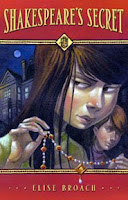
I heard through one of my favorite bookstores that Elise Broach has a new book out, Missing on Superstition Mountain. Now, I heard Elise Broach speak a little over a year ago, so the next time I went to the library, I picked up one of her earlier books, Shakespeare's Secret.
And that, folks, is one of the wonders of marketing. No purchase was actually made, but a promotional e-mail led me to mention Elise Broach's new book to all of you, and one of her older ones, as well.
Shakespeare's Secret involves a young girl trying to find a jewel that appears to have belonged to a long-dead queen of England and been passed down to a contemporary person through a family member with connections to Shakespeare. Personally, I felt the various plot threads didn't tie together very well. However, I definitely liked the historical aspects of the book, which is why I was so very vague about describing them just now. I didn't want to give away the best stuff.
There are two big difficulties when writing mystery for children, and I think Broach does manage both of them here. The first difficulty is that kids are kids and can't go far or do much on their own. Thus it's hard for them to investigate things. That problem is addressed in Shakespeare's Secret by making the mystery very close to home. The second difficulty is that in the twenty-first century we expect parents to keep an eye on their kids and not let them wander off investigating things. That's why in so many child mysteries, the parents are distracted by work, a bad marriage, or finanical woes. The kids suffer from benign neglect and are thus able to go off sleuthing. Branch handles that issue, again, by keeping the action close to home.
Another thing she does is give the child some traditional child problems--new kid in school and trouble making friends. In The Fletcher Farm Body I didn't actually give the main character a child problem, but there is something youthful going on with him and his friends.
Now I'm thinking...why? Is it because we writers of child mysteries want to give them a real child feel/setting? Is giving the child detective some kind of child personal life the equivalent of giving an adult detective a job and maybe a love interest? (I hate love interests in mysteries. Just thought I'd mention that.)
By the way, my library still stamps books with due dates so readers can tell how often a book has been taken from the library. Shakespeare's Secret has been stamped a lot.
Surviving Antarctica: Reality TV 2083. Andrea White. 2005. HarperCollins. 336 pages.
From the prologue:
What chance did Stephen Michael have of winning his Toss? In the year 2080 there were so many fourteen-year-old kids and so few scholarships. And if he lost--he hated to think about his choices then.From chapter one:
THREE YEARS LATER. Andrew Morton was lounging in the soft spot in the tattered couch where he always watched television.
What do Andrew Morton, Polly Pritchard, Robert Johnson, Billy Kanalski, and Grace Untoka have in common with each other? They're all fourteen, and they're all contestants of Historical Survivor, a reality show that 'teaches' by reenactment. This edition of Historical Survivor chronicles the tragic journey of Robert F. Scott and his team. The year? 1912. Their mission? To be the first to reach the South Pole. The Department of Education (DOE) led by Dolly Jabasco (Hot Sauce) will recreate the circumstances faithfully. They will have the tools and resources and supplies that Scott had with him. Can five children succeed where five grown men (experienced explorers) failed? The children, at first, are fearless. They believe that TV is TV. True, there have been a few deaths in past seasons of the show--but those were adults; they're kids. They believe that in a true emergency, the camera crew would be there to save them. Problem is, the camera crew seems to be invisible?! Where are they? How is this show being filmed?!
Told from each teen's perspective and the perspective of one of the editors who chooses to break all the rules, the book is an exciting adventure exploring the ethics and morality of the entertainment industry, society, and the government itself.
Andrea White's novel envisions the world--particularly America in the latter part of the twenty-first century as a shadow of its former self. Having cut all scientific research for economic reasons AND having stopped all public education systems for the same reason. Every household is required to have their children until the age of fourteen watch a certain number of 'educational' programs on TV per week--thirty hours. At the age of 14, each child is given a chance to win a chance at further education (high school, college, etc.) in a roll of the dice type situation. Money is scarce, and society is literally divided into the haves and have-nots.
I loved this one. I would definitely recommend it for fans of
The Hunger Games,
Divergent,
The Maze Runner, and
Rash.
Wishes were for people of the twentieth century, not the twenty-first. (10)
She couldn't believe how wrong modern people were. They didn't know that a person's mood came from the inside. (42)
Polly noticed a stack of books on her bedside table. She had read thousands of books on her electronic book card, which she refilled at the computary. But only once had she read a book with an actual cover and pages that turned. It was The Fellowship of the Ring by J.R.R. Tolkien. She could still remember the pleasant hours she had spent with that book one summer on the steps outside her hut, fanning herself because of the heat. (59)
"Did you know that less than ten percent of the public votes in elections?" Chad said.
 Dark Sons. Nikki Grimes. 2005. Hyperion. 218 pages.
Dark Sons. Nikki Grimes. 2005. Hyperion. 218 pages.
A few weeks ago, I reviewed Nikki Grimes' A Girl Named Mister, a verse novel about how a Christian teen handles her pregnancy by taking comfort from Mary's story.
Dark Sons, like A Girl Named Mister, is a verse novel. It stars a young man, Sam, who is struggling to accept his new reality. His father has left his mom. His dad has fallen in love with a white woman--a young woman--and he is starting a new life, a new family.
Dark Sons is about his struggling to make peace between his past and present. How the father he loved and respected and admired goes missing. How he feels about his father marrying again. How he feels about having a half-brother, David. Where does Sam belong? Has this divorce displaced him forever? Or will he find a place to belong in this new home?
Sam may be confused, but he never falters in his faith. He holds onto his belief in God. He sees God as his Father. The one Father who will never fail him. He identifies with Ishmael's story.
Dark Sons is a verse novel. The book alternates between a modern story (Sam) and an ancient story (Ishmael).
Child of Promise
Long awaited.
Twice promised.
Heir of Canaan.
Born of Sarah.
Son of miracles.
The one intended.
The son
who is
not me. (75)
Newly
 available in paperback
available in paperback from Zondervan. I really liked this one. I liked both narrators. I liked seeing the bible story through fresh eyes. I liked the poetry.
© Becky Laney of
Becky's Book Reviews

By: Becky,
on 7/27/2010
Blog:
Young Readers
(
Login to Add to MyJacketFlap)
JacketFlap tags:
alphabet,
animals,
humor,
concept books,
Simon and Schuster,
board books,
2005,
farms,
2010,
review copy,
Add a tag

Click, Clack, ABC. Doreen Cronin. Illustrated by Betsy Lewin. 2005/2010. Simon & Schuster. 24 pages.
Animals awake
Beneath blue blankets.
Clickety-clack!
Duck dashing,
Eggs emptying,
Flippity-flip!
Goats grooming,
Hens helping,
Inchworms inching.
The animals are getting ready for another adventure. An alphabetical adventure. What does the day hold in store for our clever farm animals?
Are you a fan of Doreen Cronin? Do you have a favorite character? A favorite book? From
this series. I'd have to say the original, Click, Clack, Moo: Cows that Type and Dooby, Dooby Moo are my favorites! I love the typing cows! And I really love the duck! There's just something so fun, so playful, so silly about these books!
© Becky Laney of
Young Readers

The Pirates! In An Adventure with Ahab. Gideon Defoe. 2005. Knopf Doubleday. 160 pages.
That one looks almost exactly like a whale!
This is not the first Pirates! novel, I believe the first book is The Pirates! An Adventure with Scientists. But it is the first that I've read. How to best describe this one? Silly, quirky, strange, funny. The Pirates! exist in a timeless world--you'll find them placed within a historically inaccurate world where all times, all peoples, all cultures, exist side-by-side. For example, in this one, you've got the Pirates putting on a Vegas show in a mad attempt to raise money to pay for their new luxurious pirate ship. But that Vegas show doesn't quite pay off as much as they like, so they end up making a bargain with Captain Ahab, a man on a mission to find the white whale that ruined his life.
Part of the quirkiness of this one--of this series--is that none of the Pirates have names. You have your Pirate Captain (which is as close as you get to a real name of sorts). Then you'll have pirates like "Pirate with a Scarf" and "Albino Pirate" and "Pirate in Green" and the like. You won't find fully fleshed characters by any means. And you won't find much of a true plot either. Instead you've got pirate-themed messages or social commentary. In this case, the "commentary" is about people trying to live beyond their means, and the burden of debt.
I think you need to be in the right mood for this one. I think silly and light. I do think it is enjoyable if the timing is right.
One of my favorite elements of the book--strange as it may seem--comes in the final pages. Where readers are told to watch for these other Pirates! titles. The list goes on for five pages! And titles include:
- The Pirates! In an Adventure with Mondays
- The Pirates! In an Adventure with Automatons
- The Pirates! In an Adventure with Rita, Sue & Bob Too
- The Pirates! Have Been Running with Scissors Again
- The Pirates! Are Overdoing It a Bit
© Becky Laney of
Becky's Book Reviews
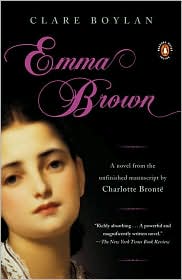
Emma Brown: A Novel From the Unfinished Manuscript by Charlotte Bronte. Clare Boylan. 2005. Penguin. 464 pages.
We all seek an ideal in life.
The first two chapters of this one were written by Charlotte Bronte. A note to the readers shares that these chapters were written after the publication of Villette and before Bronte's marriage to Arthur Bell Nicholls. Clare Boylan inspired by those chapters--and by another unfinished fragment written by Charlotte Bronte--wrote Emma Brown.
Who is Emma Brown? That is the question?! When "Matilda" is dropped off at boarding school--a school run in the Misses Wilcox's home--she's thought to be well off, a lady. But when the money for her schooling doesn't arrive, and further correspondence with her family fails completely, the women lose patience, hating the fact that they've been fooled. They blame "Matilda" for everything. Turns out that "Matilda" is really Emma. Not rich, not genteel, just plain old Emma Brown. The girl isn't sure of all her own history. She does know that some things are best kept secret.
Emma isn't completely friendless. A few in the community do take an interest in her case, in her story, in the mystery that is her past, her identity. Can Mr. Ellin and Mrs. Chalfont find out who the girl is in time? How will knowing Emma change their own lives, their own destinies?
I liked this one. It wasn't always an even read. (I think I liked the first half better than the second.) But I liked it for its exploration of life's injustices--it's a novel that examines how women and children could be treated, mistreated, ignored, and slandered by others. It's a novel about poverty, about hardships. It's a novel that can be dark in places. (Poor Jenny Drew and her "dolls.") But it's not a novel without hope, without love, without redemption.
Here's an exchange between Matilda--soon after she's found out--by Miss Wilcox:
"Look at you!" she declared. "You have faded away to a scrap of dust. You scarcely exist at all."
"I do exist," Matilda protested, but her voice, too, was dulled to dust. "My soul exists. Does not scripture say that all else is vanity?"
"How dare you talk to me of vanity?" Miss Wilcox said; "you who dressed like a princess with no pretension to the title!"
"If those clothes did not make me a princess then these will not make me a beggar," Matilda whispered, with weary defiance.
"Do you not care that I have stripped you of all that gave you significance?" Miss Wilcox spoke almost in wonder.
"Not unless I believe significance to be rolled up in a bale of cloth."
"You have the devil in you," Miss Wilcox declared. She marched the child to the fireplace so that she could see herself in the overmantel. "Now how do you like yourself?"
Matilda gazed with interest. Her pale face showed no perceptible change of expression but her eyes were keen and she looked over her reflection as if inspecting a stranger.
"Do you realize," said Miss Wilcox, "that if I put you outside the door at this moment, you would be just another urchin in the street?"
"I would be free," Matilda breathed. (66)
© Becky Laney of
Becky's Book Reviews
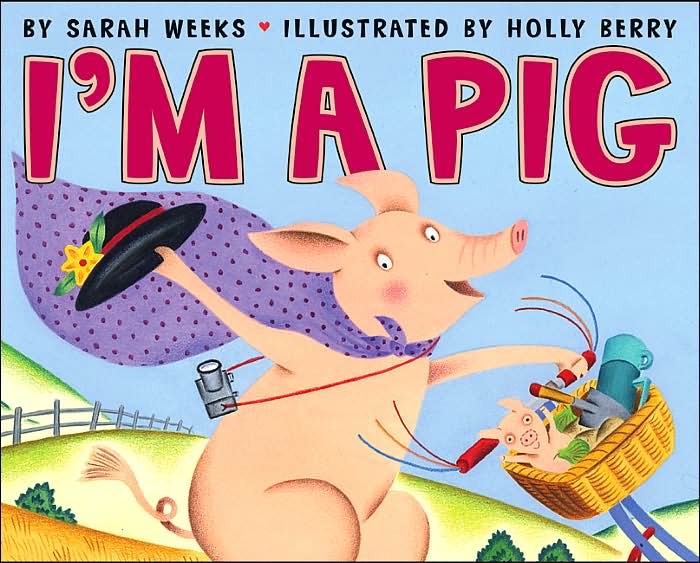
I'm A Pig. Sarah Weeks. Illustrated by Holly Berry. 2005. HarperCollins. 32 pages.
I'm a pig, I'm a pig,
and I don't give a fig
if you call me a pig,
'cause that's what I am.
I'm a pig, I'm a pig...
Our little pig is so so happy to be what she is, a pig. It's a celebratory picture book about being yourself, about loving life. It's a cute book. A bit silly perhaps. But fun. I'm not completely sure the rhymes always work, or that the rhythm always work, but for the most part I think it does. I just love the illustrations!
© Becky Laney of Young Readers
.jpg?picon=107)
By:
Lizzy Burns,
on 2/8/2010
Blog:
A Chair, A Fireplace and A Tea Cozy
(
Login to Add to MyJacketFlap)
JacketFlap tags:
reviews,
history,
non fiction,
education,
TEOTF,
Nonfiction Monday,
2005,
houghton mifflin harcourt,
poc,
suzanne jurmain,
Add a tag

The Forbidden Schoolhouse: The True and Dramatic Story of Prudence Crandall and Her Students by Suzanne Jurmain. Houghton Mifflin Books for Children. 2005. Personal copy. Review originally appeared at The Edge of the Forest.
by Suzanne Jurmain. Houghton Mifflin Books for Children. 2005. Personal copy. Review originally appeared at The Edge of the Forest.
Prudence Crandall was smart and a hard worker. She went to school, taught, saved, and then opened her own school for girls. One day a teenage girl approached her with a simple request: she wanted to learn so that she could teach. Would Miss Crandall admit her to the school?
Isn't that what every teacher wants, students eager to learn? Asking to come to school?
Except that Sarah Harris, the girl asking the question, is African-American. And the year is 1831. The town is Canterbury, Connecticut.
The Forbidden Schoolhouse is the account of how Sarah Harris's quest for education, so that she could teach others, led Prudence Crandall to open a school for African American girls and how the townspeople, the town, and the state, conspired to prevent the school from opening, and then to try to shut the school down. It is also an account of Crandall becoming a political activist, because before Sarah Harris asked her fateful question, Crandall was not active in the abolitionist movement.
One of the hardest things to do in works of history is to convey the point of view that existed in a different time. Jurmain presents the world of the 1830s, including the economic, legal and physical risks that Crandall took when she decided to open her school for African American girls. She also shows the courage of the students and what they were willing to put up with, in the pursuit of education. It is eye opening to the modern reader: the drive for education, and the prejudices that existed in the slave-free North.
The Forbidden Schoolhouse reads like an exciting work of historical fiction; yet it is all real. Jurmain does an excellent job with pacing, with keeping the reader on the edge of their seat with what will happen next. How far will the town and state go in wanting to shut down the school? How far is Crandall willing to go to keep it open? Jurmain includes detailed Appendices, letting the reader know "what happened next" to all the main people.
Another think I liked about The Forbidden Schoolhouse is that while it appears to be the story how one woman tried to change the world, Jurmain shows that it was much more than that. Crandall was one woman: but many people helped her, from the leading abolitionists of the day to the African American parents who were willing to pay the school fees and send their daughters to the school to the girls who went – and stayed – despite the abuse heaped on them by the townspeople who didn't want them in their town. And it also redefines what "to change the world" means: is it to open the school? To keep the school open no matter what? To bring an issue to the public? Does it matter whether the change takes place when you want it to, or 60 years later?
Amazon Aff
.jpg?picon=107)
By:
Lizzy Burns,
on 2/1/2010
Blog:
A Chair, A Fireplace and A Tea Cozy
(
Login to Add to MyJacketFlap)
JacketFlap tags:
houghton mifflin harcourt,
ancient history,
james m deem,
reviews,
non fiction,
TEOTF,
Nonfiction Monday,
2005,
Pompeii,
Add a tag

Bodies From the Ash: Life and Death in Ancient Pompeii by James M. Deem. Houghton Mifflin Books for Children. 2005. I believe I bought my own copy. Review originally appeared at The Edge of the Forest.
by James M. Deem. Houghton Mifflin Books for Children. 2005. I believe I bought my own copy. Review originally appeared at The Edge of the Forest.
Photos! Maps! Original sources! Multiple Subjects! Do history books get better than this?
Bodies From the Ash contains many stories. Pompeii: a Roman city during the early days of the Empire. It's also Pompeii: the volcanic eruption of Mt. Vesuvius that buried a city and its people. And Pompeii: the science behind the bodies. And Pompeii: the evolution of archaeology from treasure hunting to science. Finally, Pompeii: the preservation and storage of artifacts.
One of the things that I have always loved about history is the ability to glimpse a different world. Because of the quick destruction of Pompeii, and the way the city was buried, Pompeii provides a unique look into the past. Because Pompeii was covered with dust, ash, gas, and stone, when the bodies of the dead decayed a space was left; when a space is found, plaster is poured in, resulting in detailed plaster casts. We can look on the faces of people who lived more than a thousand years ago. And the buildings were also preserved: we can see their homes, the graffiti on the walls; look at the possessions they chose to take when they tried to flee. Bodies from the Ash is about this history; but it also is about how the first people who realized the ancient city and its treasures were still intact dug holes not to discover the past but to get jewelry and statues. Afterwards came the realization that the plaster process could be done, and that what was below the surface was more valuable than jewels.
it also is about how the first people who realized the ancient city and its treasures were still intact dug holes not to discover the past but to get jewelry and statues. Afterwards came the realization that the plaster process could be done, and that what was below the surface was more valuable than jewels.
All of these stories weave together into one narrative about life and death in Ancient Pompeii. This isn't about history that is dead and buried in the past; it's about history that is alive. It's alive in the unexcavated areas of the ancient city; in the ongoing pursuit to both explore the city and preserve what has been found; and in the still active nearby volcano. And it's photos! I could sit all day just looking at the photos and the maps, planning an imaginary trip to Pompeii to see the excavations for myself.
Amazon Affiliate. If you click from here to Amazon and buy something, I receive a percentage of the purchase price.
© Elizabeth Burns of A Chair, A Fireplace & A Tea Cozy
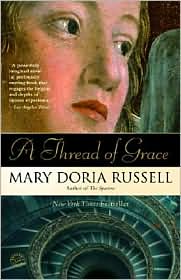
Russell, Mary Doria. 2005. A Thread of Grace. Random House. 464 pages.
A simple answer to a simple question.
A Thread of Grace is a complex historical fiction novel for adults. Set mainly in Italy during World War II, it tells not one or two stories--but many stories, a dozen at least. The good news? They are very human stories. They can also be very compelling stories. The bad news? They're not all equally compelling. And I'm not sure why that is. It could be all on me. The book could be all brilliant, all the time, but my mood just played too big a role in how I 'read' that day. Or, the book could be unevenly written.
The book can definitely be challenging. There are over thirty characters to follow, and many of these--though certainly not all of them--play narrator at various times. We get to see many of these characters up, close, and personal. But their stories are tangled together, intertwined. And the narrative structure isn't always the easiest to follow.
The good news is that when it's good, it's really, really good. When you're able to connect with the story, with the characters, then everything is great. The bad news is that when you're not able to connect, when you're more confused than anything else, it can be a chore to read. I haven't decided why I would feel such a connection with some of these characters, and yet feel so disconnected from others.
Was it worth it?....for me? Yes! The parts I enjoyed, I really enjoyed. There was so much to love in this one. Fascinating, flawed humans living during a very difficult time in history. I cared about the fate of these rebels, those in the Resistance fighting against the Nazis, and I really cared about the Jewish families trying to survive and hide. The book was harsh and brutal in places. Don't expect everything to be happy-happy-happy, because it's not going to happen. This is not that kind of book. Because it was authentic to the times, I think. It wasn't always an easy novel to read--emotionally speaking. I was surprised at the depth of some of these characters. One in particular, but I don't want to spoil things for you!
© Becky Laney of Becky's Book Reviews
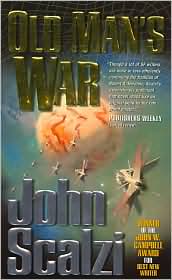
Scalzi, John. 2005. Old Man's War. TOR. 311 pages.
I did two things on my seventy-fifth birthday. I visited my wife's grave. Then I joined the army. Visiting Kathy's grave was the less dramatic of the two.
John Perry, our narrator, is a great guy to get to know. He's seventy-five, but his life is just beginning. Or should I say, just beginning to begin again. John and Kathy--like so many other senior citizens--decided upon reaching the big 6-5 to volunteer for the army. (They have ten years to change their minds. They're called into service when they're 75.) What does this mean? It means that as soldiers they'll be leaving Earth behind forever. They're not allowed to return...ever. But it also means--in a way--longevity. Though no one knows quite how, they know that *something* will be done to their bodies to make them young and strong and vibrant again. Sure, to get this vitality, this new youth, this health they have to pledge themselves to serve in the army, to fight to protect human colonies on other planets. Two to ten years. That's what it will cost. If they survive, they'll have a second life, a second chance. (Just remember that a younger body doesn't make for a younger soul.)
John doesn't know exactly all that he's in for. But he knows it's bound to be better than just growing old and dying. He figures that he can adapt to just about anything.
War. It's inescapable when it's in the title. John Perry will have to fight to survive, to stay alive. He'll have to learn to follow orders. (Not all of his fellow soldiers do, you know. Some pay for this with their lives.) And John has the makings of an excellent soldier. He's good at surviving. Suspiciously good at surviving if you ask some folks. Unlike most soldiers, John is going to have some close encounters with the Special Forces. Actually serving alongside them for a while. And what he learns is a bit shocking...to him at least.
Old Man's War is an engaging read. It has just the right blend of humor and action to make it worthwhile.
© Becky Laney of Becky's Book Reviews

Krosoczka, Jarrett J. 2005. Punk Farm. Knopf.
Punk Farm is almost too fun for words. Almost. It would be awful to say nothing about this one. To just assume that you know about this one. Some may already love it, may already have it memorized even... but if I can introduce at least one or two people to the book--that wouldn't have known about it otherwise--I can walk away with a sense of satisfaction.
Farmer Joe may be your typical farmer. But his animals are far from the ordinary. These are animals that know how to rock and roll. Boy, these animals know how to work a crowd! Pig plays electric guitar; goat plays his bass guitar; cow's on drums; chicken's on keyboards; and the leader of the band? The star of the show? The sheep, who's the vocal genius of the bunch. Can you guess which song they're rockin' this time? If you guessed Old MacDonald....you're right! You'll probably have to read this one yourself to see just how fun it is. But it's a party of a book.
© Becky Laney of Young Readers

Birdsall, Jeanne. 2005. The Penderwicks: A Summer Tale of Four Sisters, Two Rabbits, and a Very Interesting Boy.
For a long time after that summer, the four Penderwick sisters still talked of Arundel. Fate drove us there, Jane would say. No, it was the greedy landlord who sold our vacation house on Cape Cod, someone else would say, probably Skye.
I liked this one. A lot. It was a nice and enjoyable novel. One that a whole family could enjoy. One that was meant to be read aloud and shared. It's not a loud story. Not crammed with action and explosions and bathroom jokes. But it's a good and pleasant one. It's a story of the Penderwick family--Mr. Penderwick, Rosalind (12), Skye (11), Jane (10), and Batty (4), and their dog, Hound. Mrs. Penderwick died when Batty was just a baby. (From cancer I believe.)
The book is about one of their summers. The summer that they visit Arundel, a cottage. It is owned by a rather grumpy and snooty woman Mrs. Tifton. But Mrs. Tifton has a son, Jeffrey, and a gardener, Cagney, and there is where the fun begins. New friends to make. Problems to create and solve. Life to be experienced.
Recommended for those who like a bit of old-fashioned charm in their lives.
About the book:
The Penderwicks: A Summer Tale of Four Sisters, Two Rabbits, and a Very Interesting Boy is on many State Award Master Lists, including those for Arizona, Hawaii, Illinois, Kansas, Kentucky, Maine, Massachusetts, Michigan, Nebraska, New Hampshire, New Mexico, Pennsylvania, Rhode Island, South Carolina, Tennessee, Texas, Vermont, and Virginia. Other awards and honors include:
- National Book Award Winner for Young People’s Literature
- New York Times Bestseller
- Book Sense National Bestseller
- Booklist Editors’ Choice
- Kirkus Reviews Editors’ Choice
- Publishers Weekly Best Children’s Book
- School Library Journal Best Book of the Year
- Child Magazine Best Kids’ Book of the Year
- Children’s Book Sense Top Ten Pick
- 2007 Kalbacher Klapperschlange (Germany)
© Becky Laney of Becky's Book Reviews
View Next 5 Posts





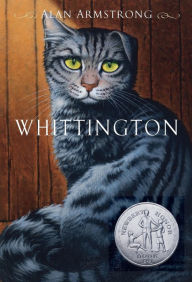
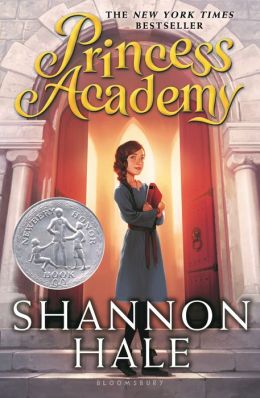

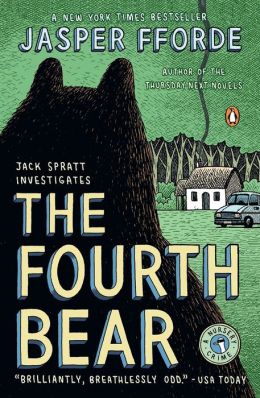
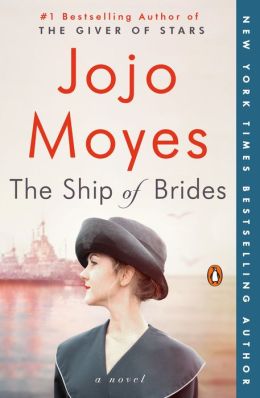
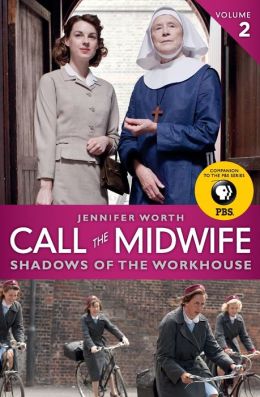
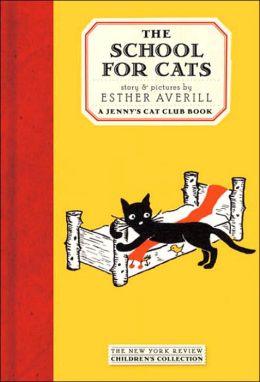
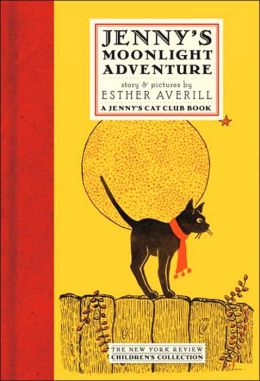

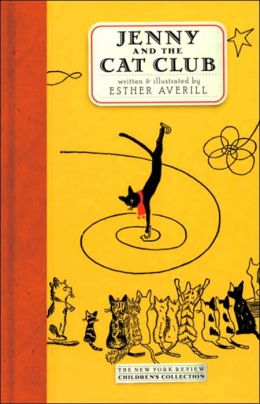
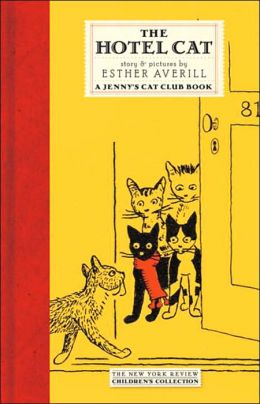

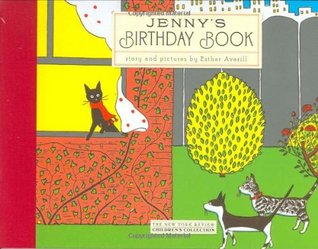


















 it also is about how the first people who realized the ancient city and its treasures were still intact dug holes not to discover the past but to get jewelry and statues. Afterwards came the realization that the plaster process could be done, and that what was below the surface was more valuable than jewels.
it also is about how the first people who realized the ancient city and its treasures were still intact dug holes not to discover the past but to get jewelry and statues. Afterwards came the realization that the plaster process could be done, and that what was below the surface was more valuable than jewels.



I haven't heard of this book, but it sounds wonderful. Even though poem in your pocket day is past, I'm going to print out the baby chick origami, my four year old will love it.